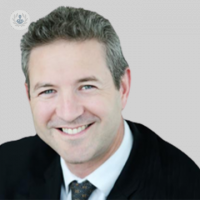Breast augmentation: the procedure, risks and recovery
Autore:What is breast augmentation and how is it performed?
Breast augmentation describes a number of techniques used to enlarge the breasts. The main part of this treatment is the use of breast implants, although in some cases, it may be possible to use a patient’s own fat in a procedure. This is known as autologous fat transfer or fat grafting.

The advantage of implants is that they provide a predictable volume and shape. However, most patients who choose implants will need further surgery several years after the intital procedure.
The advantage of fat transfer is that once the fat has ‘taken’ it will be there forever. However, the uptake of fat can be unpredictable and vary from one breast to the other. As a result, more than one session of fat transfer is often required to achieve the desired outcome. It can only be undertaken by patients who have enough spare fat to donate from one part of their body to another.
What are the risks and complications associated with breast augmentation surgery?
Breast augmentation is a safe and reliable procedure when performed by an experienced surgeon in a regulated facility. As with any surgery, there are risks specific to breast implants; there is about a 1 in 500 chance that the implants gets infected and needs to be removed.
There will be a small scar in the crease of the breast and, rarely, this scar can be raised or tender. No two breasts are exactly the same therefore it is important to expect a degree of asymmetry. However, some of this assymetry can be reduced with careful implant selection.
Implants under the muscle will move a little when that muscle is tensed. There are also some much rarer risks associated with breast implants. Two cancers have been identified in relation to breast implants – anaplastic large cell lymphoma (ALCL) and squamous cell carcinoma (SCC). However, it is important to note that these are extremely rare (there have been only 1600 cases of ALCL reported worldwide and only 19 cases of SCC).
Breast Implant Illness remains a controversial topic as there is currently no strong evidence to support its association with implants. Doctors are continuing to perform research in this area.
How long is the recovery time for breast augmentation surgery, and when can I resume normal activities?
It takes only a week or so for the incisions to heal. The majority of patients are able to return to activities such as office based work and driving within about a week.
It is advisable to avoid activities that move the breasts around too much for the first 6 weeks. It takes about three months for the implants to settle into their final shape.
What type of implants are available for breast augmentation, and what are the differences between them?
Implants are available im all shapes and sizes but the main types available are round implants or anatomical (or teardrop) shaped implants. Round implants are suitable for the majority of patients, but teardrops can be very useful in certain situations such as a total lack of breast shape or a need to preferentially fill out the lower part of the breast.
How long do breast implants last, and will I need to have them replaced at some point in the future?
Implants themselves last a long time. Silicone is an inert substance which does not interact with the body. However, as with any foreign material in the body, the body will wall off the implant with a layer of scar tissue called a capsule.
This may change over time and as a result, will gradually affect the look and feel of the implant as it tightens. Time and gravity are also a factor which may affect implants.
In general, around 80% of patients require further surgery 10 to 15 years following breast implants but this can vary from patient to patient.
If you are considering having a breast augmentation and would like to book a consultation with Mr Durrant, do not hesitate to do so via his Top Doctors profile today.


